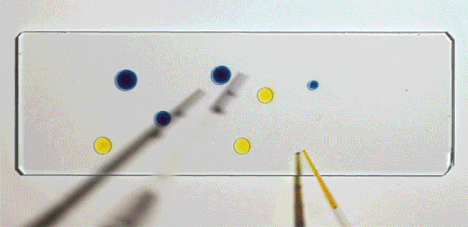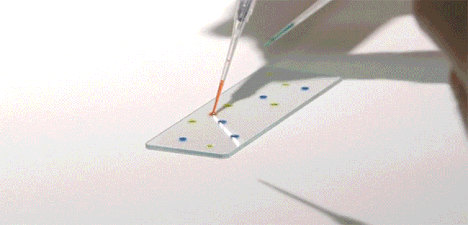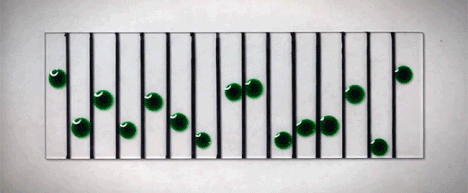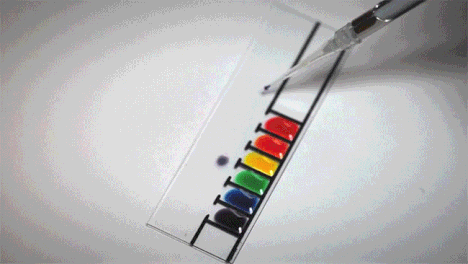
Some of the best science starts with an accidental discovery, like a researcher noticing that dots of food coloring were sorting themselves, behaving much like living cells would be expected to do, chasing, dancing around and avoiding one another.
Years of research later, Nate Circa and a team of scientists have published a paper in Nature on what they discovered through subsequent experiments: “The critical fact was that food coloring is a two-component fluid. In such fluids, two different chemical compounds coexist while retaining separate molecular identities.”

“The droplets in this experiment consisted of two molecular compounds found naturally in food coloring: water and propylene glycol. The researchers discovered how the dynamic interactions of these two molecular components enabled inanimate droplets to mimic some of the behaviors of living cells.”

The video and these animated gifs illustrate the phenomena in ways that are far more intuitively easy to grasp than the complex fluid dynamics that explains the behavior – aside from simply being fascinating to watch.

“The physical properties of these fluids give rise to this immense complexity of behavior. For example, chasing and sensing each other, and very much what we call artificial chemotaxis. Chemotaxis is the idea in biology that one single cell can sense where its enemy is, and it brings up all its machinery, and it chases that enemy to try to eat it.”

